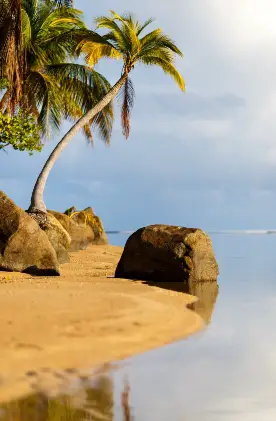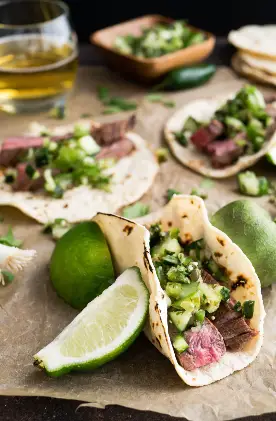A Lower Mekong River cruise takes you to parts of Asia that very few travelers get to see. The Mekong River, for those who don’t know, winds its way from Southern China all the way to Southern Vietnam – making it the seventh longest river in Asia and the twelfth longest river in the world.
This river is considered the lifeblood of Southeast Asia and it has so much rich history and diverse culture surrounding it. Perhaps alongside the Nile and a few rivers in the Amazon, the Mekong offers the greatest river cruising experience on earth. Sitting back and relaxing onboard, you can watch life along the river unfold as you pass by charming fishing villages.
The people who live along the Lower Mekong tend to work in fishing or in agriculture (rice is the major crop). They are also proud artisans who sell arts and crafts to locals and tourists alike. Not only are they talented people but they have a resilience to them that is incredibly inspiring. This is a region of the world, after all, that has seen its fair share of turmoil.



How the Lower Mekong Powered the Angkor Civilization
The Angkor Civilization – which formed in the ninth century and covered areas in what is now Cambodia, Laos, Thailand and Vietnam – was one of the most remarkable societies in history. This empire (known also as the Khmer Empire) created architectural masterpieces, ingenious engineering and water systems, and left behind a legacy that will never be forgotten.
One of those legacies was its vast water management system. For example, Angkor Wat relied on a complex web of farmland, villages, temples and ponds which were all connected by canals that were part of this grand water control system. These water systems helped Angkor Wat become one of the largest low-density, pre-industrial cities on earth at the time.
Historians often refer to Angkor Wat as a “hydraulic city” because it utilized so many different water catchment, storage and redistribution methods. Canals would connect cities and rice fields over many kilometers. The visionary of all of this was a man called Jayavarman II. He founded the empire and declared himself a “god king”, making Angkor Wat the capital.
The key that allowed his empire to flourish was the elaborate water system, which got its lifeblood from the Mekong River. During certain times of the year, the Mekong would flood. The nearby lake to Angkor Wat, called Tonle Sap, would act as a reservoir. This meant that Khmer farmers could use this lake for their rice harvests, giving stronger yields year-round. This led to a large expansion of agriculture within the empire.
Angkor’s economy was strong and the citizens knew who they had to thank: the Mekong River! They considered the river to be divine and monsoon rains were seen as sacred gifts from above. So the Mekong River facilitated agriculture and expansion of the Angkor Civilization, and even helped people trade and travel from the north to the south.



Troubling Modern History of the Lower Mekong
In more recent times though, the Lower Mekong, specifically around the border between Vietnam and Cambodia, has seen some trouble. In the 1630’s, a Cambodian king married a Vietnamese princess and allowed the Vietnamese to establish ports within Cambodian land along the Mekong. This occupation of the country was never forgiven by many Cambodians.
In 1863, the Cambodian borders were formed when the country became a colonial protectorate. The French imported Vietnamese to work on rubber plantations. The numbers of Vietnamese in Cambodia jumped to 6% of the population. When Cambodia declared independence in 1953, the country was very multi-ethnic. So along came Norodom Sihanouk (Cambodia’s first modern leader) who tried to “unify” the different ethnicities.
Sihanouk wanted to change the definition of the term “Khmer” to include a variety of ethnicities but this wouldn’t include the Vietnamese. Even though many Vietnamese had lived in Cambodia for centuries, they were still regarded as the enemy. A coup occurred in Cambodia in 1970 and ethnic Vietnamese became the targets of pogroms and massacres.
Adding to the chaos was a civil war and the US invasion of Vietnam, which included a brutal bombing campaign of Cambodia leading to occupation by the Vietnamese army. The Khmer Rouge reigned from 1975 to 1979 and caused millions of people to die from genocide, disease and starvation. If you would like to watch an interesting movie about this period, then you can watch The Killing Fields which is an award-winning film.
During these conflicts, the Lower Mekong River was certainly not at the top of anyone’s travel list. But after the violence ended in the 1990’s and Cambodia started to become safer, peaceful and connected with the world – tourism opened up in the new millennium, and the river crossing between Vietnam and Cambodia became an exciting new frontier in travel.
While some of this history is confronting, it’s nevertheless fascinating, and will be especially interesting to the generations that lived through the Vietnam War. Younger travelers have also started to show an interest in Cambodia, which can only be a good thing for the prospects of this country. Today (pre-Covid), Mekong River cruising is popular and the only real issues stem from dams being built but that’s another story all together!
Lower Mekong River Cruises with Heritage Line
There is no better way to experience the Lower Mekong than by booking a cruise with the team at Heritage Line – collectors, artisans and hosts. They offer three different journeys along the Lower Mekong, all of which cover destinations inside two countries: Vietnam and Cambodia.
These are bespoke 3, 4 or 7 night itineraries which will give you a glimpse into the extraordinary landscapes, people, culture and history of this region of Southeast Asia. Included on these cruises are excursions where you will disembark and explore traditional villages – getting to see the real Vietnam and Cambodia. Pair these incredible experiences with luxurious comfort onboard and you have yourself a once in a lifetime cruising journey.
So, for example, what does the 7 night journey look like? It all starts in Ho Chi Minh City (Saigon) where you travel south to My Tho to embark on your vessel: either The Jahan or Jayavarman – both majestic ships. You then check in to your beautiful room equipped with its own private deck for stunning riverside views. Kick back and enjoy the hazy golden views.
Your first port of call will be Cai Be. Wake up with the sun, do Tai Chi, have some breakfast and then experience the charm of Cai Be. This town is famous for its Catholic French church, traditional arts and crafts, and local food. There is even a floating market to explore, although it’s getting smaller and smaller each year due to the shift towards modern markets.
In the afternoon, the vessel heads to the Sa Dec area and to Binh Thanh Island. You will have another opportunity to hop off the boat and mingle with villagers. A local artisan will put on a show of traditional mat making and you can even give it a go yourself. Head back on board for the usual late afternoon activities: swimming in the pool, dinner and relaxation.
Day 3 is an exciting day: border crossing! First guests make a stop at the fish sanctuary of Vietnam called Tan Chau. Local boats take you zooming to a floating fishing farm. This place is a wonder of culture. Each floating structure has nets hanging off it in order to catch fish. After learning about fishing, head onboard again to sail to the Vietnamese/Cambodian border. Then it’s straight to Phnom Penh, the capital city of Cambodia.
Phnom Penh was once regarded as the “Paris of the East” and you can sense that by walking around its rustic and alluring streets. Cruise guests can enjoy a full sight-seeing day tour after breakfast – including the Killing Fields and S21 Prison (heartbreaking places). Enjoy lunch at a fantastic local restaurant and explore the Royal Palace, Silver Pagoda and National Museum. The day finishes with a cool little “cyclo” ride along the streets.
Day 5 and the boat sets sail towards Kampong Tralach on the Tonle River. The boat glides through jungle landscapes. Once you arrive at Kampong Tralach, you will get the chance to see a project that was supported by Heritage Line called the “Green School”. Students dress in green shirts and greet guests, along with a tour by the school’s principal.
A bit later in the day, the vessel makes its way up the Tonle River to Kampong Chhnang’s “Water World”. Everything here is balanced on sticks! There will be several excursions planned for this area but please know that these floating villages are home to people of Vietnamese descent. As mentioned before, they were severely persecuted by the Khmer Rouge.
The final few stops are: Koh Oknha Tey, Kampong Cham (Mekong) and Siem Reap. From Siem Reap, travelers disembark and can stay here for a few days to experience the crown jewel of Cambodia: Angkor Wat! The town of Siem Reap itself is a great place to spend time – home to bustling markets, great street food and plenty of other travelers to meet.

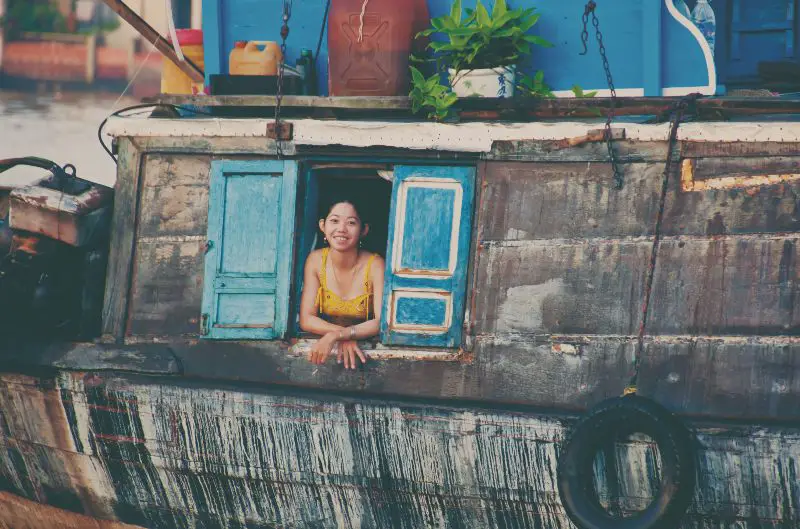






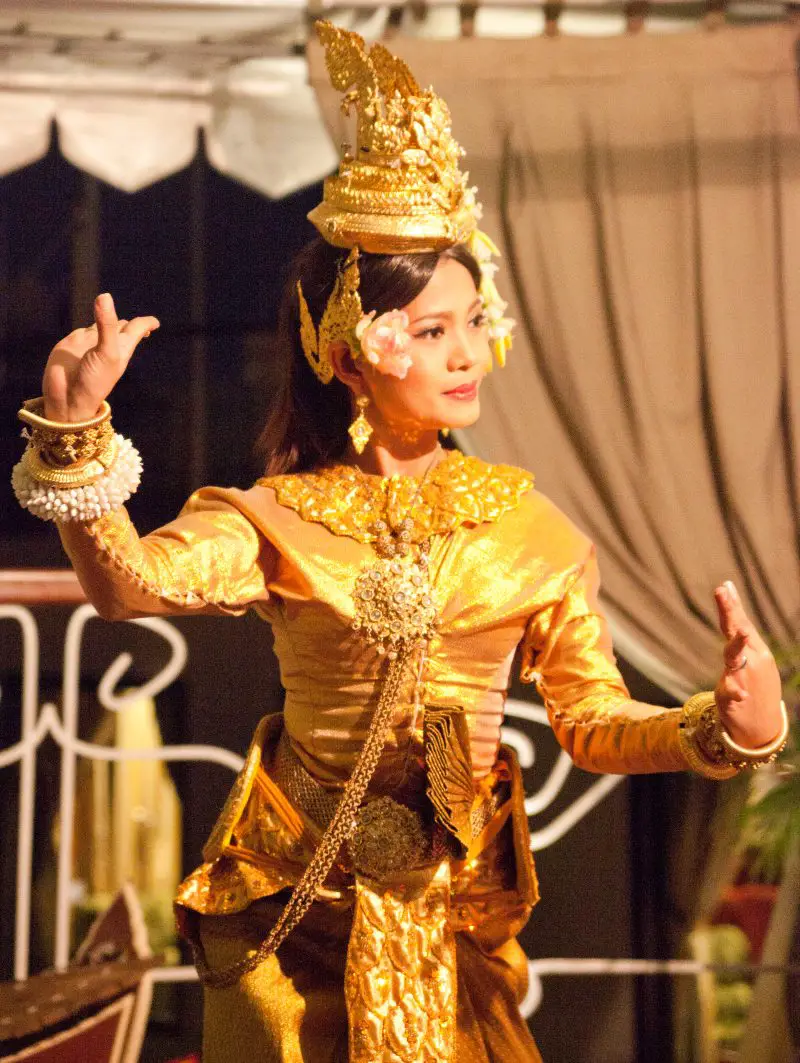





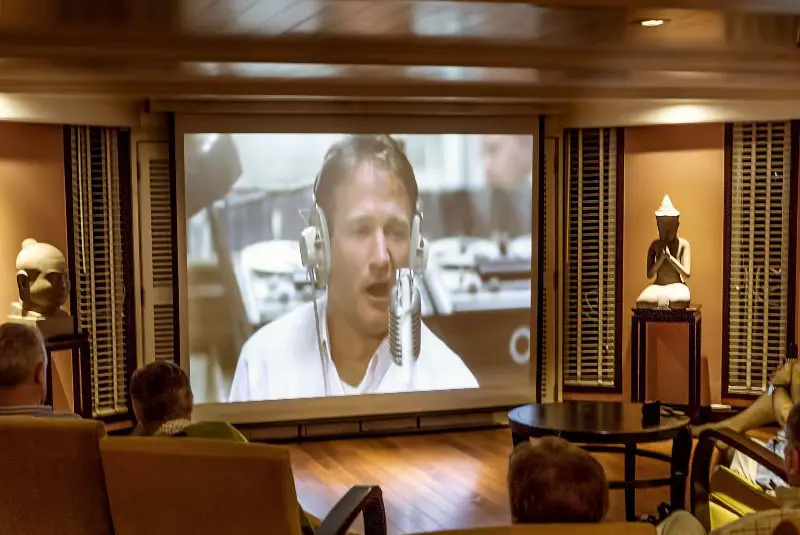

The Crown Jewel of Cambodia – Angkor Wat
Angkor Wat is the number one highlight of Cambodia. Many travelers come to Cambodia just to see this temple complex. While we recommend putting in the effort to see more of Cambodia, we do understand that for travelers on a tight schedule this may be the best option.
Once you’ve settled into your Siem Reap accommodation, it’s time to plan your Angkor Wat adventure! There are a couple of ways to explore the temple. You can either join a tour, rent bicycles or get dropped off there via a local tuk-tuk driver. Bicycles can be rented in Siem Reap for only $2 USD per day, while the tuk-tuks cost around $15-$20 per day. The tuk-tuk drivers can drop you off and then pick you up for an agreed upon price.
The other main consideration is how many times you want to enter the temple complex. Do you just want to visit for the day? Or would you like multiple day entries? You could easily spend two or three days at Angkor Wat as there is so much to see. This sprawling temple transports you back in time. You can sense the power and mysticism of this place.
Each temple is unique, each tree that is interwoven with a temple is even more unique and each path you walk down tells a different story. There are over 1,000 temples to explore in this ancient world, all of which will leave you speechless. It has the same presence that other wonders of the world have such as the Pyramids of Giza, Machu Picchu, Petra and the Taj Mahal.
If you decide to cycle through the complex, you will be able to cover more ground and visit more temples. A couple of the best temples are Victory Gate and Ta Prohm Temple. Both of these places give you Indiana Jones vibes! Located near Victory Gate is a temple with an incredible face carved in the trees. Ta Prohm Temple, on the other hand, is one of the most popular spots due to the extraordinary trees growing there.
And of course, the main postcard photo of Angkor Wat is the temple with the lake in front of it. If you can, try negotiating with the guides within the temple complex. They can show you around the main temple for a fee. Some of them are talented photographers too! They will help you find the best spots and will gladly snap away for hours, helping you bring back some stunning memories from your trip. This is especially true at sunset.



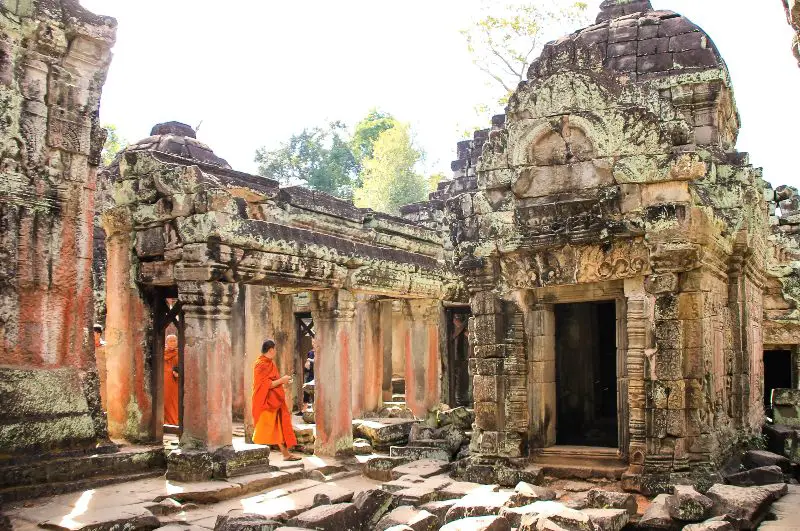

Need to Know Before you Go
It goes without saying that Heritage Line offers cruises in both directions: a 8 day/7 night cruise from Saigon to Siem Reap, or vice versa. So the route you take will depend on the direction of the cruise. The shorter 5 day (between Siem Reap and Phnom Penh) or 4 day (linking Saigon and Phnom Penh) journeys may be better suited for travelers on a strict schedule. Also, the travel periods differ for each cruise, so be sure to check the Heritage Line website for up to date information.
Heritage Line has two ships to book with on Lower Mekong cruises. They are called “The Jahan” and “Jayavarman”. Both ships are similar in size (26 and 27 rooms each respectively) but some of the styles and designs differ. You can read more about the ships before booking on their website.
When visiting Angkor Wat, try heading there before sunrise to see the temple wake up with the sun. Many travelers do this, and although it can get busy, there is no better time to experience the magic of Angkor Wat than first thing in the morning. The eeriness of the place is unreal.














